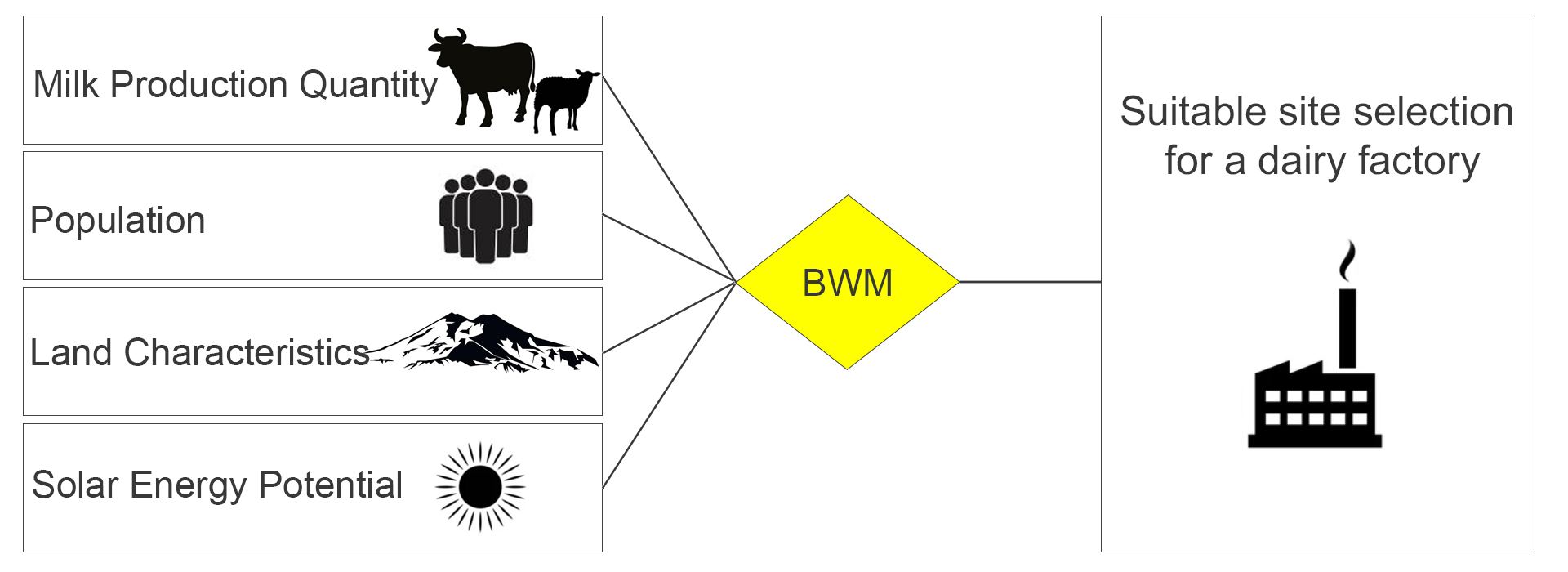
The world population is increasing, and agricultural products are strategically crucial for feeding the growing world population. In developed countries, cooperatives serve as an essential tool to ensure the sustainability of agricultural production and reduce costs. In Türkiye, cooperatives play a limited role in controlling the agricultural product market. There are many dairy cooperatives in Türkiye, but they are often ineffective in processing and marketing milk effectively. This study was conducted in Çanakkale, NW Türkiye. In this study, an approach was proposed to enable dairy cooperatives to select suitable sites for establishing a dairy factory. With this proposed approach, milk production quantity, population, land characteristics (land use capability classification (LUCC), and environmental conditions (solar energy potential) were used as main criteria. The Best Worst Method (BWM), a newly developed multi-criteria decision-making method (MCDM), was employed to determine the weights of the selected criteria. A geographical information system (GIS) was used to produce the final suitability map. Based on the BWM calculations, milk production quantity was identified as the most effective factor (46.55%), followed by population (25.86%), land use capability classification (17.24%), and photovoltaic potential (10.35%). The suitability analysis revealed that the Biga district was the most suitable location for establishing a dairy processing plant. The significance of the Biga district lies in its high milk production, large population, and well-established infrastructure that supports milk processing and marketing activities. The novel approach of this study is the integration of milk production, population, land use, and renewable energy potential through a Multi-Criteria Decision-Making (MCDM) method within a GIS environment, providing a guideline for the sustainable milk processing capacities of agricultural cooperatives. By considering photovoltaic potential and the utilization of marginal lands, the study emphasizes the importance of renewable energy and land conservation in dairy processing, thereby ensuring long-term environmental and economic benefits. Prioritizing sustainable and cooperative-oriented development contributes to Türkiye’s efforts to strengthen its agricultural sector. The data produced by this study can be utilized by politicians, decision-makers, cooperative members, farmers, and other relevant stakeholders.
Total file downloads: 15